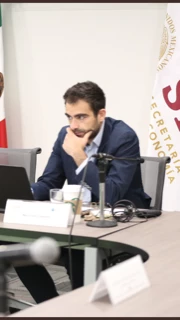 Bridging the digital divide in Brazil necessitates initiatives to improve connectivity in underserved areas. © Shutterstock
Bridging the digital divide in Brazil necessitates initiatives to improve connectivity in underserved areas. © Shutterstock
Research highlights a significant disparity: wealthier individuals usually enjoy seamless connectivity, while poorer populations often struggle with limited or no access, perpetuating socio-economic divides and hindering regional development.
A new study on internet access in Brazilian cities
To dig deeper into the nexus between financial inequality and internet access, we conducted a study across six major Brazilian cities—Belo Horizonte, Brasilia, Fortaleza, Manaus, Rio de Janeiro, and São Paulo. The aim was to examine how internet speed evolved over time and space in these cities, and how such evolution may be linked to socio-economic dimensions and pre-existing inequalities.
The study tracked mobile and fixed internet speeds in these cities from 2017 to 2023 using data from nearly 100 million geolocalized Ookla® Speedtest Intelligence® tests, a tool that tracks download and upload speed of internet connections. It was no surprise to see that wealthier neighborhoods consistently enjoyed superior speeds, especially on fixed networks. While mobile internet speed also correlates with wealth, the trend has been decreasing over time, probably due to wider mobile network coverage and infrastructure upgrades like the shift to 4G and 5G.
Correlation between fixed (a) and mobile (b) internet speed and a proxy for income in different cities
* The Pearson correlation coefficient (shown on the Y axis), helps show the strength and direction of the relationship between two variables.
One aspect of the study that hit home was the examination of internet speeds around educational facilities in 2023. Shockingly, about 13 percent of these areas had speeds below the 80 Mbps threshold, which is necessary for effective e-learning. This affected around 8 percent of the school-age population. The disparities were stark between cities, with Belo Horizonte performing the best and Rio de Janeiro being the lowest. In Rio de Janeiro, we also found that favelas (working-class neighborhoods that often have informal, high-density housing) generally exhibit lower internet speeds compared to the rest of the city; a disparity that increased over the years.
Persistent inequalities in internet access
This analysis underscores the persistent internet access inequalities in Brazil, a country with a very diverse digital landscape. While a few regions, like Santa Catarina, outperform some OECD countries in broadband access, others like Acre, Amazonas, and Maranhao lag significantly behind.
Despite substantial investments - about USD 28 billion since 2020 - in Brazil's telecom sector, efforts have fallen short of ensuring equitable internet access. The study reveals that the poorest populations still struggle with slower connectivity compared to wealthier counterparts—a gap that widens during crises. Indeed, following the declaration of a national emergency due to the COVID-19 pandemic, all cities saw a significant decrease in internet speed , but poorer areas saw bigger dips.
Changes in fixed internet speed (blue) and stay-at-home rates (orange) in Rio de Janeiro
Solutions for bridging the digital divide
So, what can we do about these disparities? Policymakers and the private sector can work together on targeted local solutions. Here are some initiatives that can help:
- Improve connectivity in underserved areas: Promote Fiber to the Home (FTTH), a technology that uses optical fiber to deliver fast, reliable high-speed internet directly to buildings.
- Make internet packages and devices more affordable: Reduce the cost of high-speed internet packages and devices to make them more accessible to everyone.
- Foster digital literacy: Implement training and awareness programs to help people use the internet effectively.
For example, the World Bank is supporting the State of Sergipe to connect about 1,000 public buildings via fiber optic, catalyzing private sector investments to bring internet access to unconnected households.
By implementing these measures, we can work towards more equitable internet access, in Brazil and around the world. This will help ensure that everyone has access to fast, affordable, and reliable connectivity—a cornerstone of development in the digital age.
The research featured in this blog was supported by the Digital Development Partnership, which aims to advance digital transformation in low and middle-income countries by building strong digital foundations and accelerators, facilitating use digital cases for the digital economy to thrive.






Join the Conversation